
It’s wintertime here in Colorado, which means cold, wet and snowy weather conditions. We all know the importance of making sure your dog gets enough exercise. But is it too cold for your dog to play outside when there is a drop in the temperature?
Dogs get cold just like people. If they don’t have a thick coat to protect them, they are at risk for hypothermia and frostbite. How cold is too cold to risk spending time outdoors?
Here’s a look at the dangers associated with winter weather and how you can still safely enjoy the outdoors with your dog during the cold winter months.
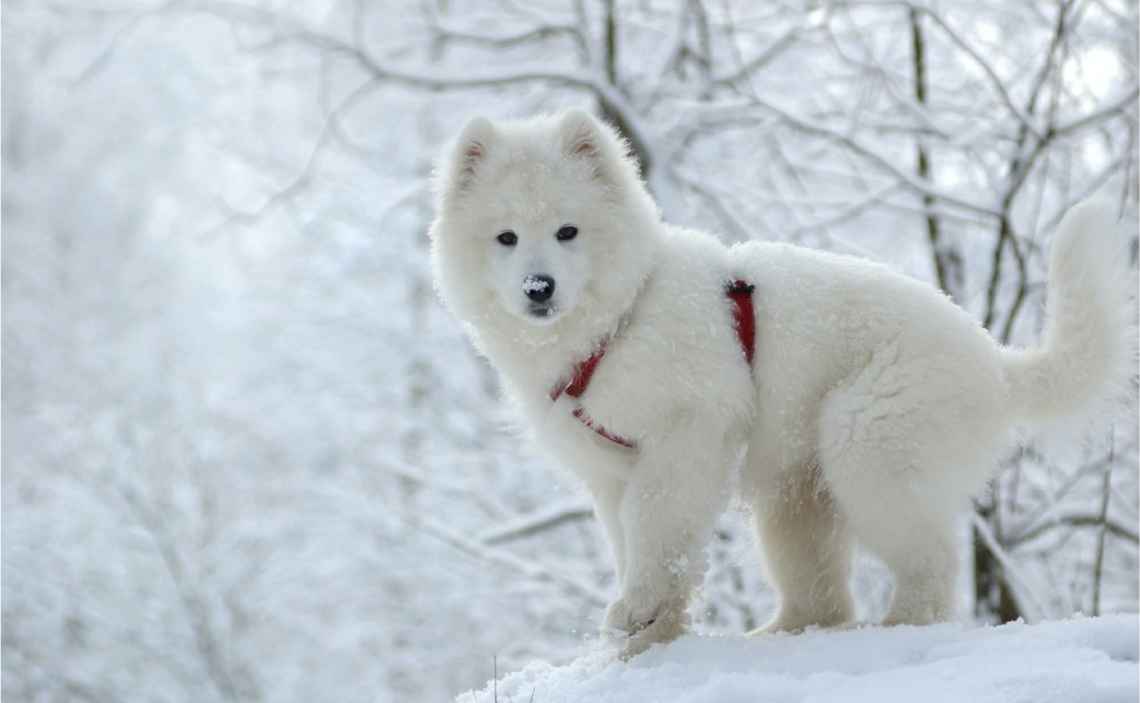
Factors to Consider in Cold Weather
First of all, it’s important to recognize dogs respond to cold temperatures differently depending on various factors. It’s important to take these factors into account when determining how well your dog is able to tolerate cold temperatures.
-
Coat type
Dogs with thick, double-layered coats tend to be the most cold-tolerant. These breeds include Siberian Huskies, Newfoundlands or Samoyeds. In most cases, these breeds have been bred to withstand cold temperatures. On the other hand, dogs with exceptionally thin coats (e.g. Greyhounds and Xoloitzcuintli) suffer the most in cold weather.
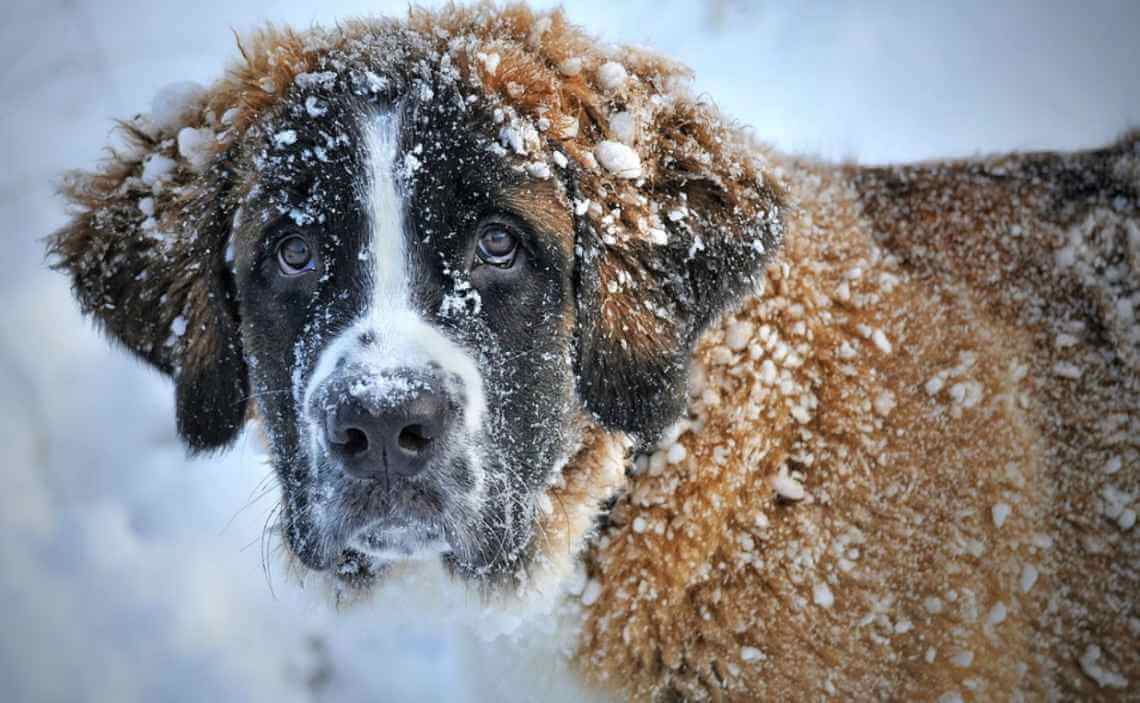
-
Size
Small dogs get colder faster because they have less body mass. Larger dogs are able to withstand colder temperatures because their bodies are able to retain heat longer.
-
Weight
Body fat is a good insulator. In general, thinner dogs tend to get cold faster than their heftier counterparts. However, the health risks of being overweight far outweigh any benefits, so don’t try to fatten up your dog in a misguided attempt to protect them from the cold.
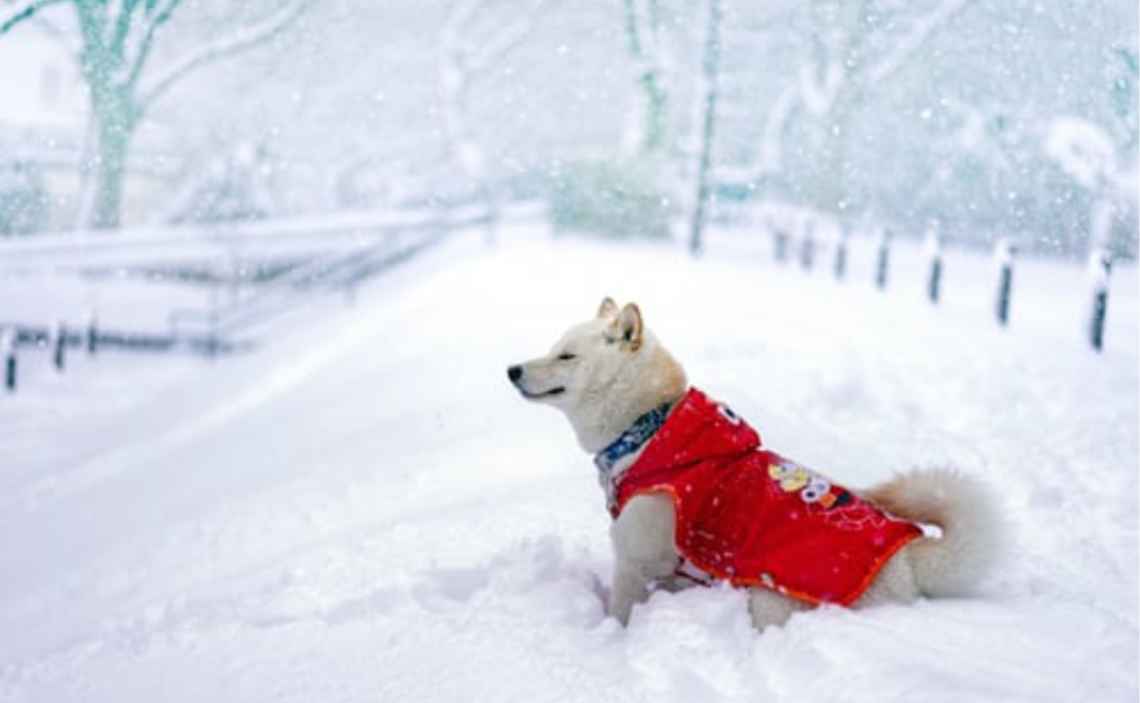
-
Conditioning
Acclimation to the cold is an important factor. For instance, dogs who are training for the Iditarod in Alaska are conditioned to be in the cold over time. If you took an average Husky and dropped it off on an icy tundra, he would likely perish. If your dog is acclimated to the cold weather, like hunting and working dogs, he or she will be able to tolerate colder temperatures than a dog used to lying in a warm bed all winter.
-
Age and health
Young puppies and older dogs are not able to regulate their body temperature the way a healthy dog in its prime can. Therefore, they need more protection from the cold.
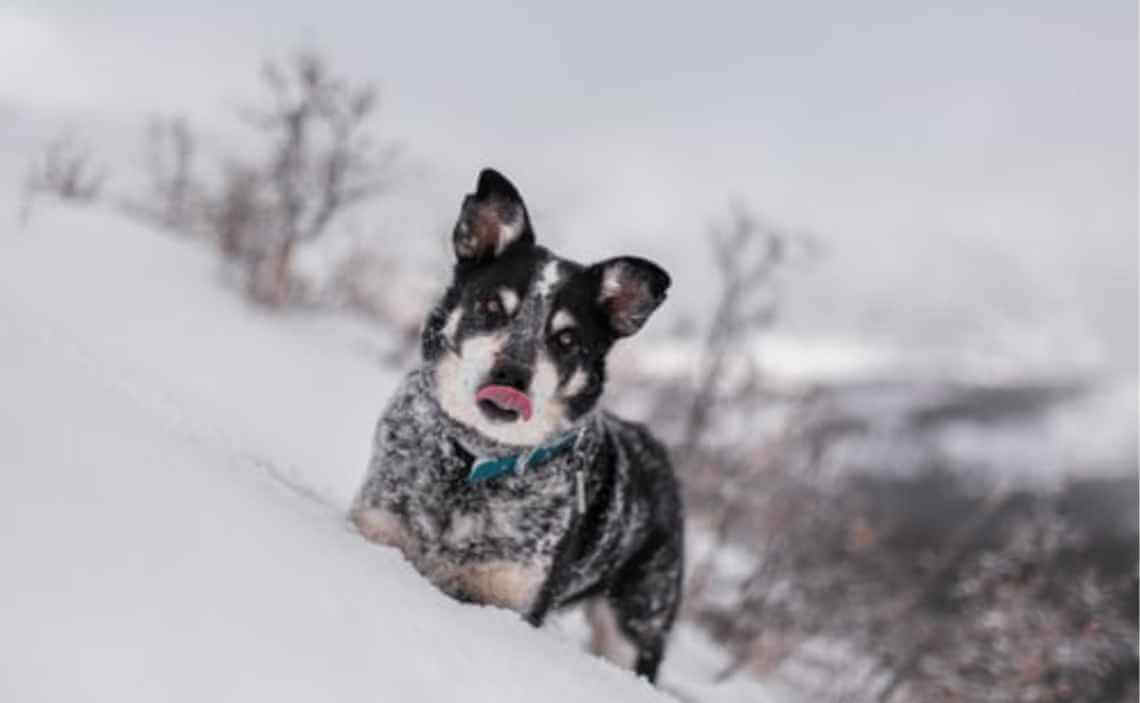
-
Weather conditions
Wet weather can tip the scale, making it unsafe for your dog at a higher temperature than if the air is dry.
Most dogs are able to handle temperatures until they fall below 45⁰. At that point, smaller dogs with thin coats will probably start to feel uncomfortable. When the temperature falls below freezing (32⁰ F), you should be sure to put a coat on smaller breeds with thin coats, and make sure to monitor them when they are outside. Once the temperature drops below 20⁰, all dogs should be watched carefully to ensure they don’t develop hypothermia or frostbite.
The best way to monitor your dog when it’s cold is to keep a close eye on their behavior. If you notice your dog is shivering, acting anxious, whining, slowing down, searching out a warm location or holding up one or more paws, it’s time to head inside.
For those who want more information on weather conditions and canine safety, here is a Cold Weather Safety Chart for Dogs based on the Tufts Animal Condition and Care (TACC) system.
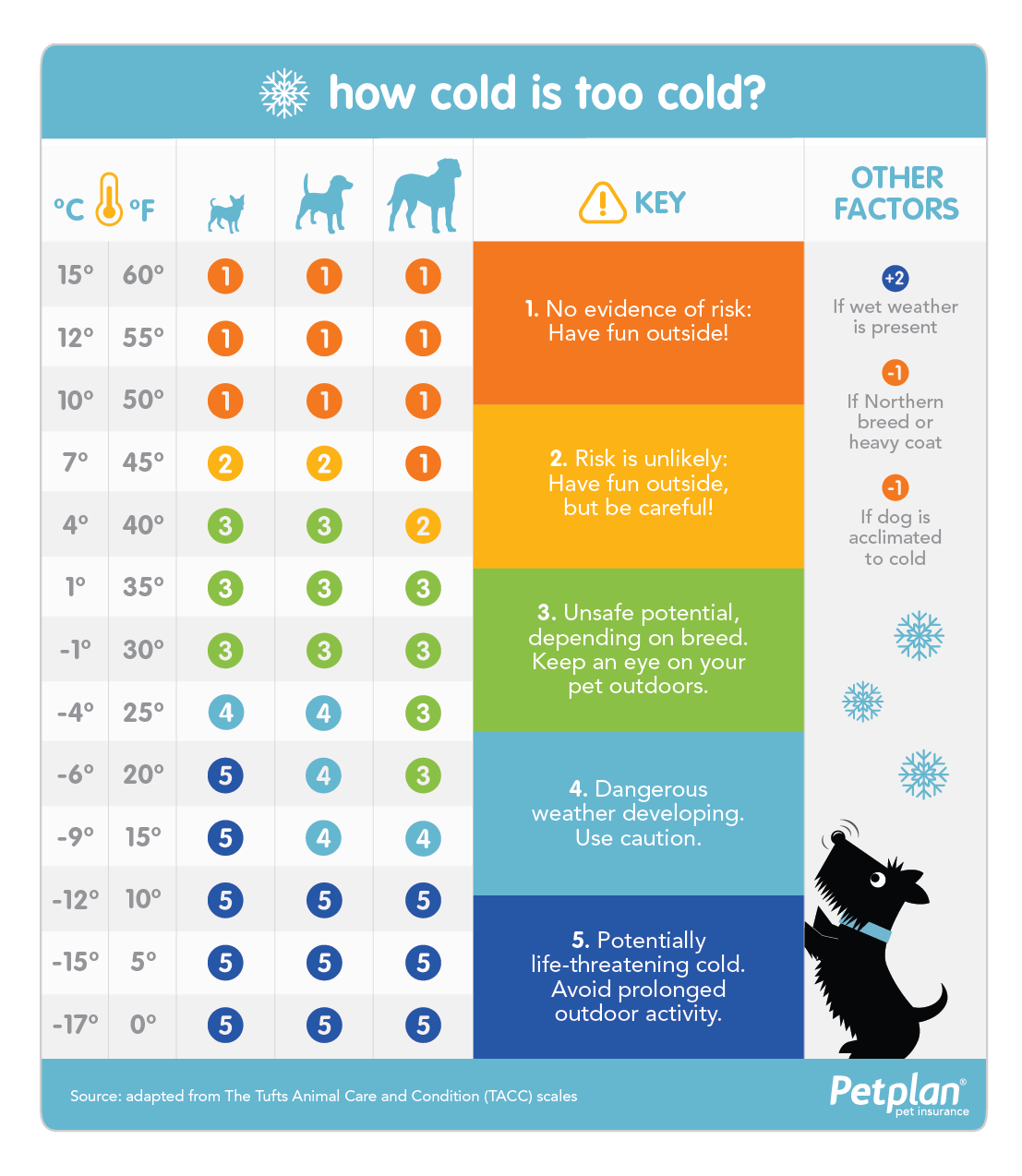
Cold Weather and Hypothermia in Dogs
Sometimes it’s simply too cold for your dog to be outside for more than a few minutes, regardless of their breed. Prolonged exposure to dangerously cold temperatures can put your dog in danger of frostbite and hypothermia. Hypothermia occurs when the body is no longer able to sustain a normal temperature. Symptoms of hypothermia include:
- Weakness and shivering
- Acting sleepy or lethargic
- Fur and skin are cold to the touch
- Decreased or inaudible heartbeat
- Dilated pupils (the black inner circle of the eye appears larger)
- Gums and inner eyelids are pale or blue
- Trouble walking
- Trouble breathing
- Stupor, unconsciousness or coma

Treatment for Canine Hypothermia
Treatment for hypothermia should begin immediately, as it can be a life-threatening emergency. If you suspect your dog has hypothermia, take the following steps:
- Remove your dog from the cold.
- Dry your dog thoroughly (either with towels or a hair dryer set on low and held 12 inches away)
- Wrap your dog in a warm blanket (warm in clothes dryer first).
- Wrap warm hot-bottles in towels to prevent burning your dog and place on your dog’s abdomen.
- Heating pads can be used if your dog is dry but supervise them so they don’t chew on the cords. Heating pads can quickly become too hot, so consider wrapping in a towel as your dog warms up.
- Give your dog warm fluids to drink.
- Check your dog’s temperature with a thermometer. If it is below 95⁰ your dog could be at risk for hypothermia. Take them to a veterinarian immediately.
- If your dog’s temperature is above 95⁰ F, recheck their temperature every 15 minutes to see how well your warming efforts are working. Once their temperature is 100⁰ you can remove the hot water bottle but be sure to keep them warm.
If you suspect your dog has hypothermia, get them checked by a veterinarian the same day. This is important because even one incidence of hypothermia can be harmful and make them prone to it in the future.
If your dog doesn’t respond to your warming attempts within 30 – 45 minutes, go straight to an emergency veterinarian hospital or clinic.
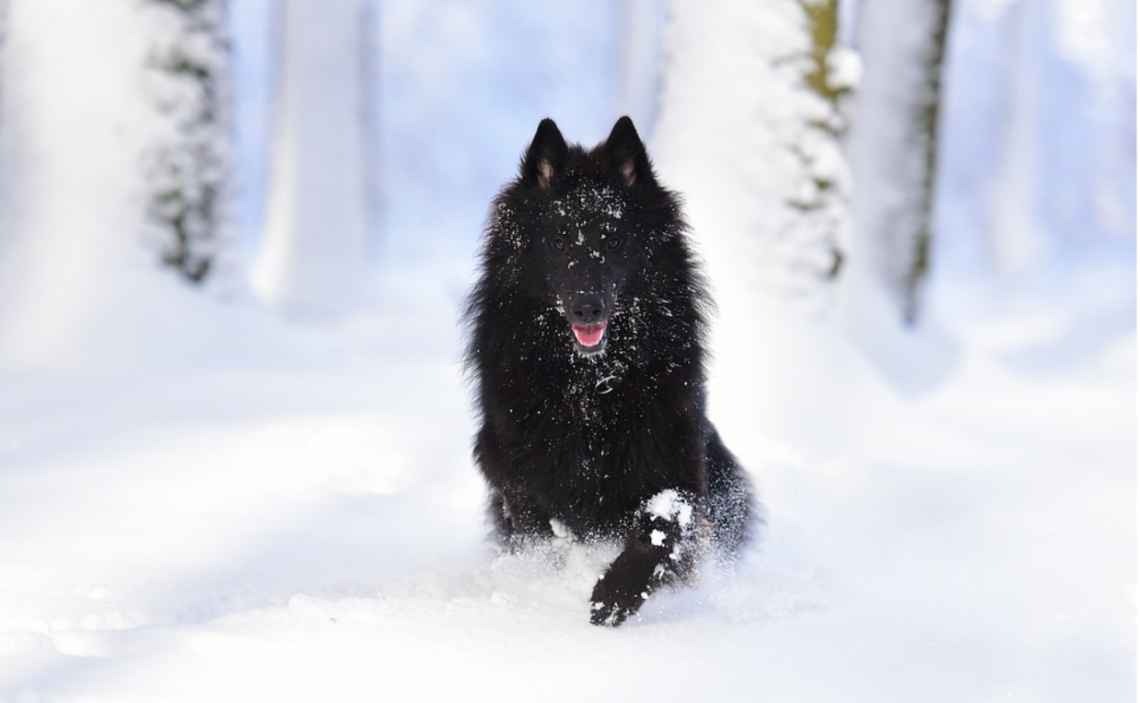
Prevention of Canine Hypothermia
The best way to prevent hypothermia in dogs is to not allow your dog to be out in frigid temperatures or near frozen water for very long.
Read more: 16 Tips to Keep Your Dog Safe and Comfortable During Winter Weather
Consider equipping your dog with a dog sweater or coat and booties to protect their feet. If you can’t convince your dog to keep his or her booties on, try paw balm or even spray cooking spray on the bottom of their paws to prevent snowball accumulation.
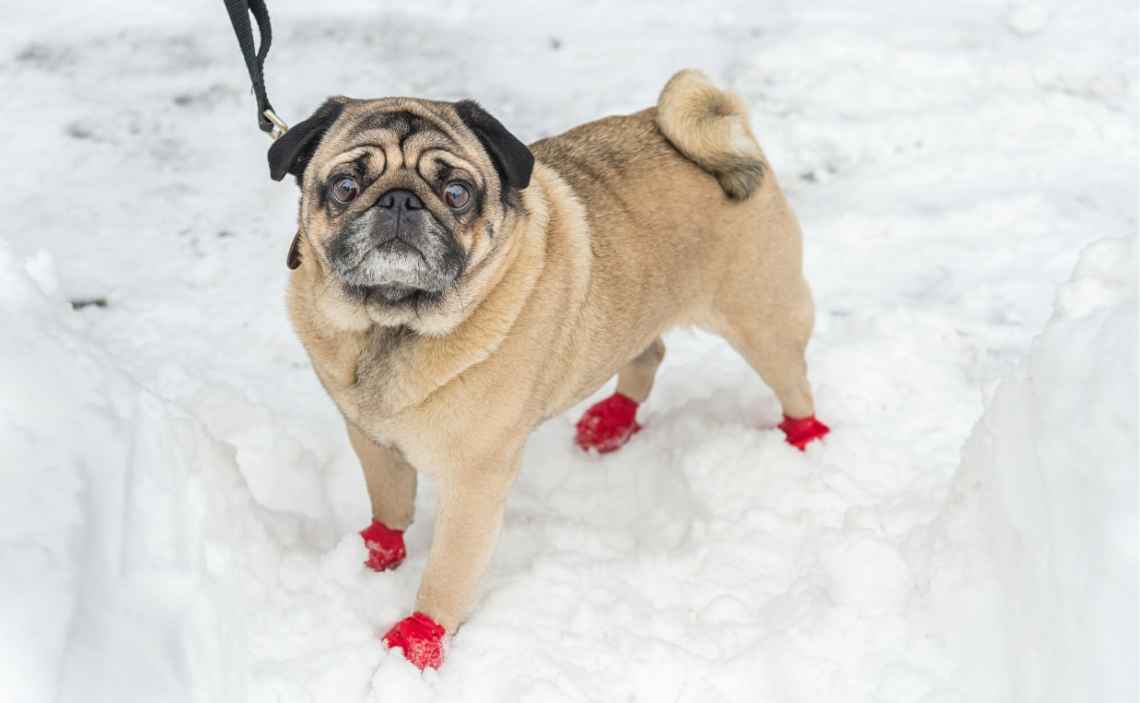
Read more: What to Do If Your Dog Has Cracked Paws
Dog daycare is a great option for letting your dog get exercise in an indoor, climate-controlled, supervised environment.
Read more: How to Choose the Best Dog Daycare for Your Puppy or Dog
Above all, use common sense. If it’s too cold for you to be out very long, chances are it’s too cold for your dog as well.

Related posts:
- Winter Camping With Your Dog
- 7 Indispensable Tips for Hiking With Your Dog in Winter
- What to Put in a Dog First Aid Kit
How do you protect your dog from hypothermia during the cold Colorado winter months? Please share with the rest of the Canine Campus community in the comments below…




 How to Choose the Best Dog Bed for Your Dog
How to Choose the Best Dog Bed for Your Dog Do Dogs Really Need Heartworm Prevention Medication?
Do Dogs Really Need Heartworm Prevention Medication?






Leave a Reply